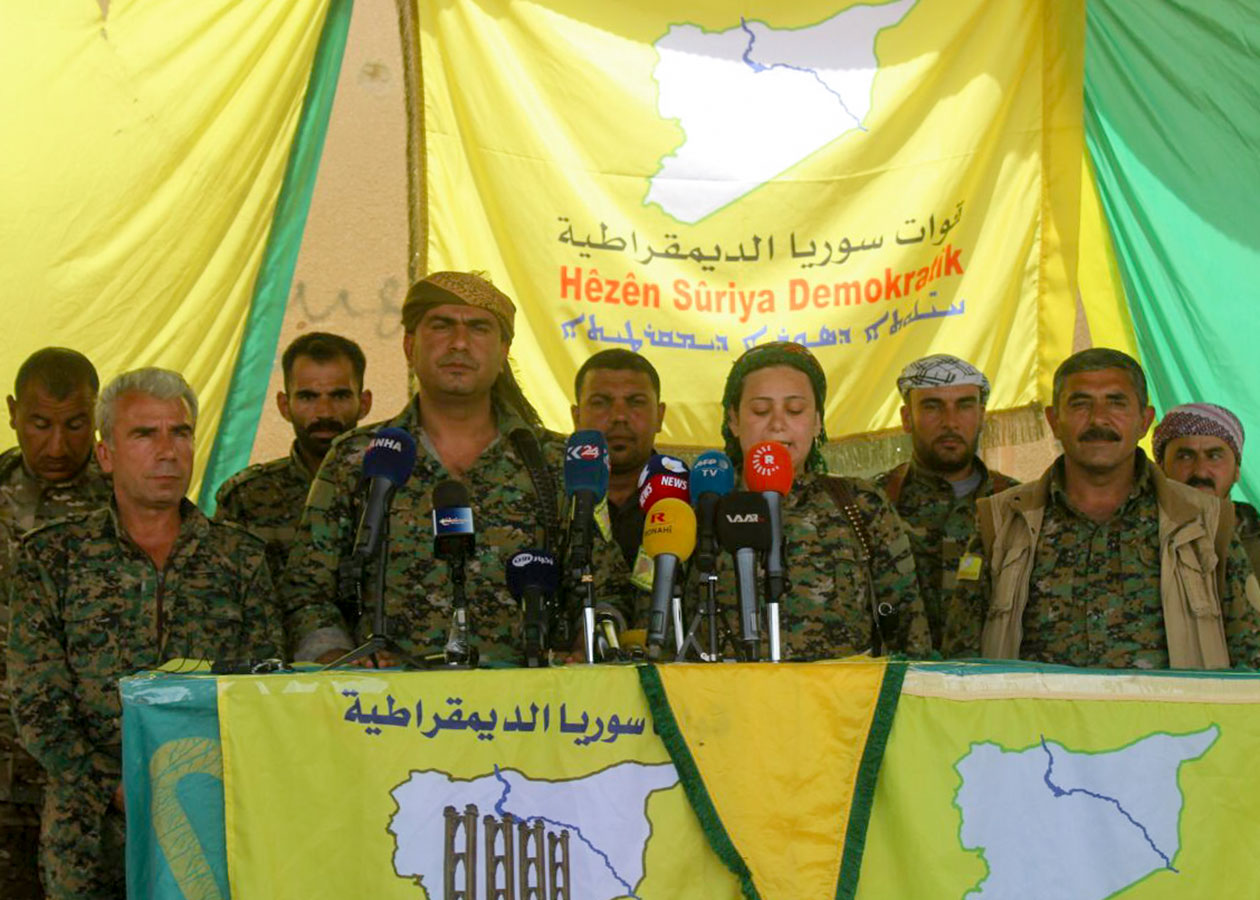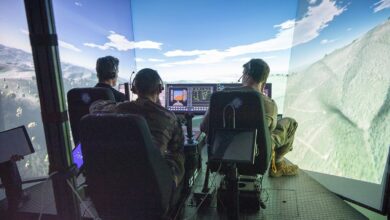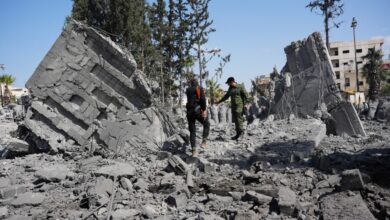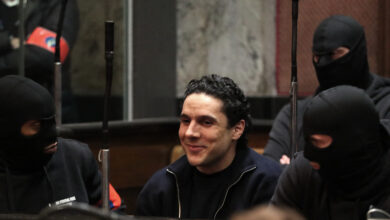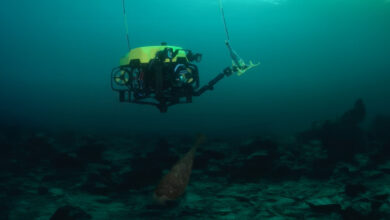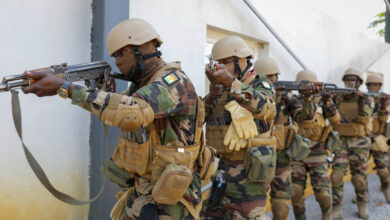SDF to restart offensive operations against ISIS in the MERV and on Syria-Iraq border
The Syrian Democratic Forces announced its Operation Jazeera Storm would return to offensive operations against Islamic State in eastern Syria to the border with Iraq.
Offensive operations in the Middle Euphrates River Valley were “paused” because SDF troops had earlier moved to the mainly Kurdish enclave of Efrin in northwest Syria to defend against an ultimately successful Turkey-led offensive there that the Pentagon said had “distracted the SDF” from the fight to defeat ISIS in the Middle Euphrates River Valley.
At a press conference on Tuesday, May 1, leaders of Deir Ezzor Military Council including its commander, Ahmad Abu Khawlah, and the spokesperson for Jazeera Storm, Leilwa Abdullah said that “ISIS retains a significant presence near the Iraqi borders from which it seeks to retain safe haven to plan attacks around the world and expand its territory in Syria and Iraq.”
“Over the coming weeks, our heroic forces will liberate these areas, secure the Iraq-Syria border, and end the presence of ISIS in eastern Syria once and for all,” the DEMC said.
In a statement, the Coalition affirmed its support and confidence in the SDF.
“The SDF’s focus on ISIS is critical to achieving the lasting defeat of the criminal terrorist organization that continues to pose a threat to all nations,” CJTF-OIR said.
“We continue to stand alongside our partners and ensure the liberation of all terrain held by ISIS terrorists,” said Major General James Jarrard, commanding general of Special Operations Joint Task Force – Operation Inherent Resolve. “This is a key milestone in bringing lasting stability to both Iraq and Syria.”
U.S. to seek further contributions from regional partners
In a statement, State Department spokesperson Heather Nauert said the U.S., the Coalition, and local partners “including the Syrian Democratic Forces” were launching operations against the final ISIS strongholds in Syria.
“We will defend United States, Coalition, and partner forces if attacked,” Nauert said.
The U.S. will work with Turkey, Israel, Jordan, Iraq, and Lebanon “to secure their borders from ISIS,” and will “seek further fair share contributions in forces, materiel, and resources from regional partners and allies to stabilize liberated territories,” Nauert added.
On April 17, Saudi Foreign Minister Adel al-Jubeir reaffirmed his country’s willingness to deploy troops to Syria after reports that Trump’s administration was seeking to assemble an Arab force, including troops from Saudi Arabia and the United Arab Emirates, to help stabilize Syria.
Recalling remarks by President Donald Trump at a press conference with President Emmanuel Macron of France, Nauert said the U.S. “will ensure that there is a strong and lasting footprint in Syria such that ISIS cannot return and populations liberated from ISIS are not exploited by the Assad regime or its Iranian supporters.”
On April 26, U.S. Defense Secretary Jim Mattis said that French special forces had arrived in Syria over the past two weeks to help boost U.S.-led efforts, and that a “re-energized effort” in southeast Syria would begin in the days ahead.
“You’ll see increased operations on the Iraqi side of the border, and the French just reinforced us in Syria with special forces here in the last two weeks,” he said.
On March 29, representatives of the Democratic Federation of Northern Syria, the Syrian Democratic Forces and the Women’s Protection Units (YPJ) met Macron, and at a press conference after the meeting delegates said that France would “reinforce” it’s military presence in the Manbij area in order to prevent a Turkey-led attack on the SDF.
However, Macron’s office said later that France was not planning a new military operation in northern Syria “outside the international coalition against Daesh,” using the Arabic acronym for ISIS.
Images purporting to show U.S. Humvee and French Nexter Aravis military vehicles sporting their respective national flags near Manbij were shared on social media on Monday. Pro-SDF media outlet Furat FM said the vehicles were in Manbij and later published a video of more vehicles it said was shot in Manbij.
https://www.youtube.com/watch?v=divGCTR25-Q
The Defense Post has asked the French Ministry of Defence to confirm the deployment but has not yet received a reply, and the Coalition referred The Defense Post to the French Ministry of Defense.
The French armed forces tweeted images on Tuesday, saying that its Operation Chammal “supports” the fight against the last ISIS pockets in the Euphrates valley.
La force #Chammal appuie la reprise des dernières poches de Daech dans la vallée de l’Euphrate. pic.twitter.com/q4TaMGB9M9
— Armée française – Opérations militaires (@EtatMajorFR) May 1, 2018
SDF recaptures Deir Ezzor villages
The announcement of a return to action in southeast Syria – and Nauert’s declaration that the U.S. will defend Coalition and partner forces if attacked – comes just days after the SDF recaptured four villages on the east bank of the Euphrates river to the north of Deir Ezzor city taken earlier by pro-Syrian government forces.
A spokesperson for the Coalition confirmed to The Defense Post in a Tuesday email that “pro-Regime forces attacked SDF who were engaged in counter-Daesh efforts near Deir Ezzor on the morning of 29 April 2018,” adding that “there were no Coalition troops co-located with the engaged SDF members” during the advance.
“The Coalition monitored the advance of pro-Regime forces,” the spokesperson said, reiterating that “established deconfliction channels” were used.
The Coalition conduced “a deliberate demonstration of force to de-escalate the situation in support of our SDF partners,” the spokesperson said. “There were no casualties or damage to infrastructure as a result of this demonstration of force.”
The spokesperson did not confirm if this demonstration of force involved the use of aircraft or artillery.
In February, U.S. strikes against ‘pro-regime’ forces near Deir Ezzor may have killed more than 200 Russian military contractors near the Conoco gas facility. The Coalition said the strikes were in retaliation for an attack on SDF and Coalition forces positions.
In a Sunday statement, SDF spokesperson Kino Gabriel said that “Syrian regime forces, militias and allies” attacked the SDF-held villages. Some reports pointed at Iran-backed militias, and imagery shared on social media seemed to suggest that the pro-regime force was primarily composed of local and tribal militias.
The Defense Post asked about the make-up of the pro-regime forces, but the Coalition spokesperson said that they would not “speculate on the composition of hostile forces.”
“We remain committed to our SDF partners in the campaign to defeat Daesh in eastern Syria,” the spokesperson said.

